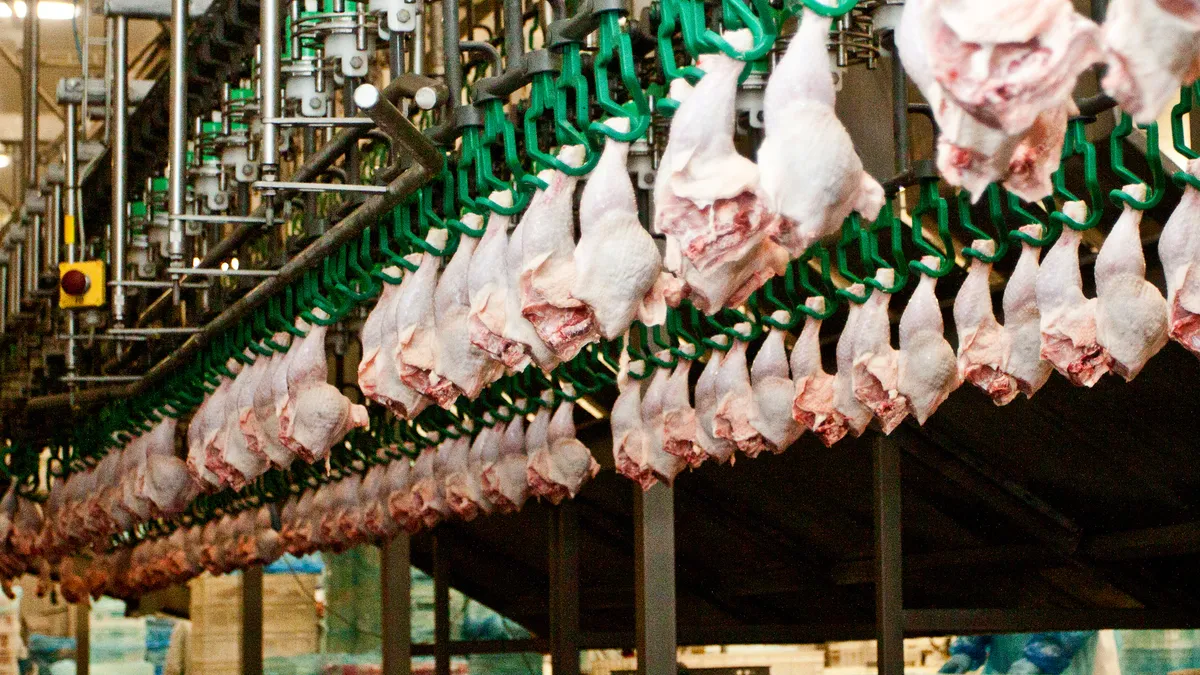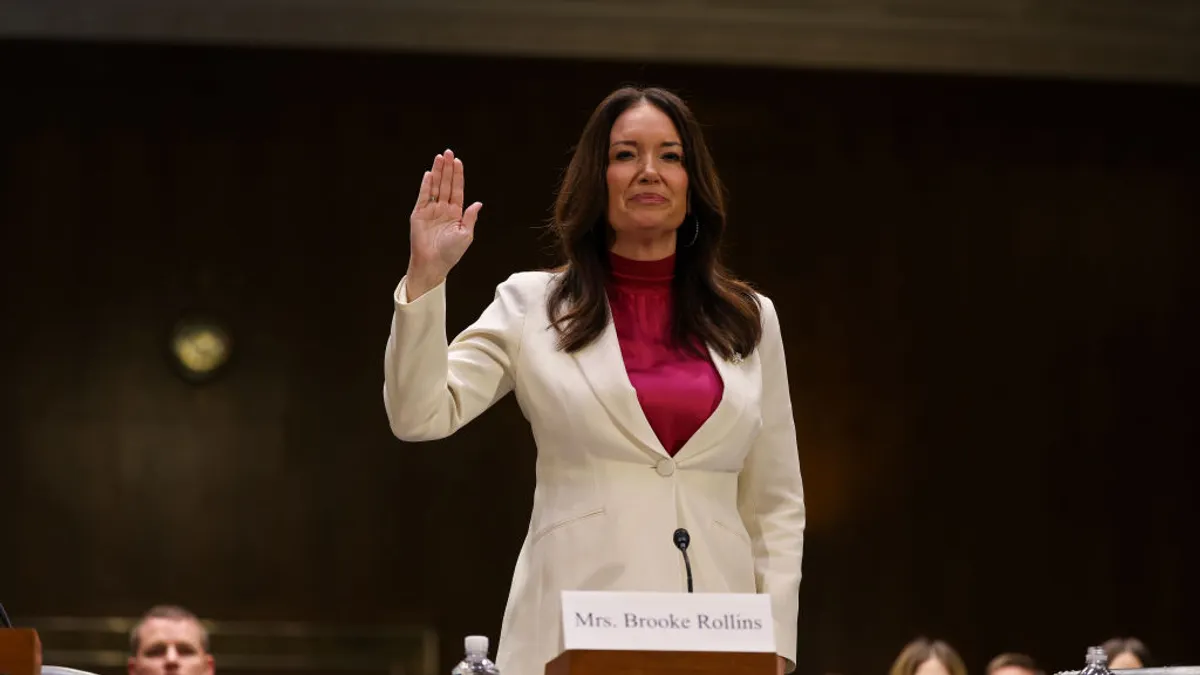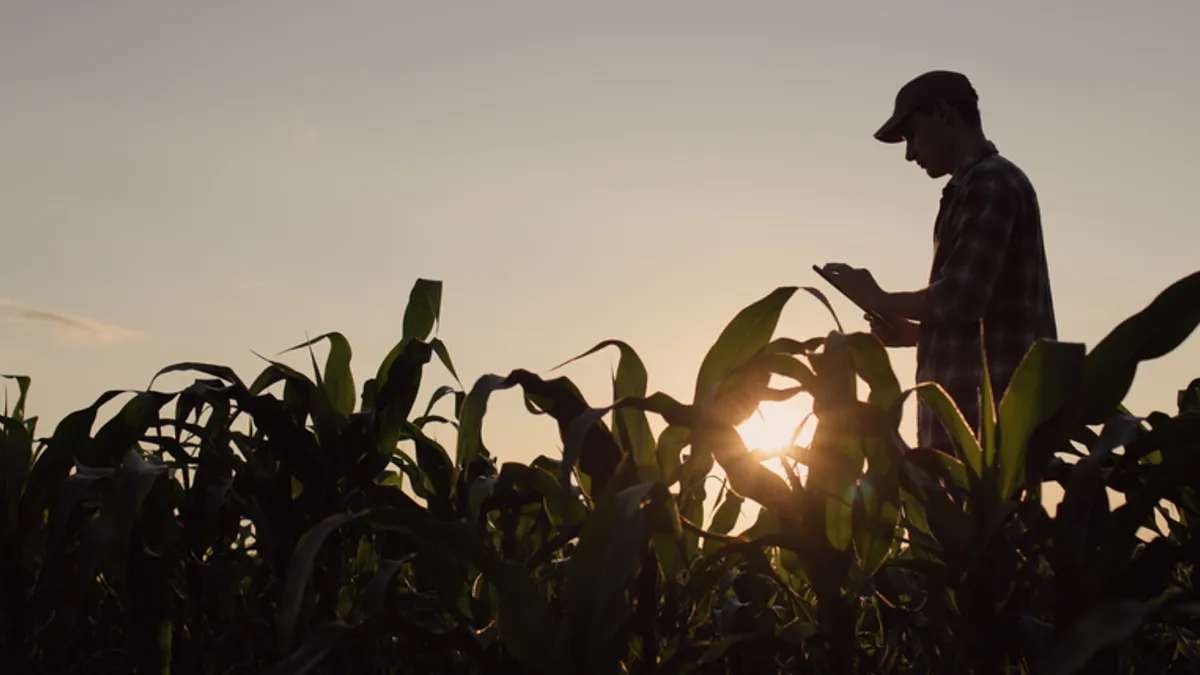Pandemic supply chain crunches made household basics like flour, eggs and meat disappear from store shelves or shoot up in price. A new federal program aims to solidify food supply chains by expanding local agriculture and putting small farmers at the forefront.
The U.S. Department of Agriculture's Regional Food Business Centers Program announced earlier this year it is creating 12 hubs across the country to build resilient food systems by helping small and mid-sized farm businesses scale operations. The program will distribute $400 million in funds from 2021’s American Rescue Plan over five years, and the centers will serve 11 different geographical regions around the US and its territories, as well as tribal lands.
“We heard from folks from around the country about some of the ways we could invest these dollars to really make an impact in connecting local producers with consumers and empower a much more resilient food system — one that’s more diverse and brings more value back to the family farmer,” said USDA Under Secretary for Marketing and Regulatory Programs Jenny Lester Moffitt.
A vital hub for regional producers
Regional Food Business Centers will be virtual hubs for connecting small and mid-sized farm businesses, processors, aggregators and distributors to the technical assistance they need to level up — and the resources and funding opportunities to help them get there. The 12 finalists announced in May were chosen for the cross-disciplinary partnerships they bring to the table and include land grant universities, economic development corporations, producer associations and nonprofits.
The centers will handle awards from $15 to $50 million, with funds supporting capacity building and technical assistance activities as well as sub-awards to regional farming projects. Each center is conducting assessments to ensure their outreach and programming can meet the needs of the agricultural communities they’ll serve. Agreements with USDA will be finalized in early 2024.
These hubs will allow farmers and food producers "find local, trusted advisors who are already working in the food system," Moffitt said. Each will offer technical assistance programming tailored to the producers, processors, distributors and other food system stakeholders in their area, informed by needs assessments and institutional knowledge.
The centers will also distribute sub-awards of up to $100,000, known as Business Builder grants, directly to businesses and organizations. Funds will cover activities ranging from business planning and product development to processing and supply chain coordination. “We're almost thinking of ourselves as like a mini-USDA here in the region,” said Dawn Thilmany McFadden, director of the Northwest and Rocky Mountain USDA Regional Food Business Center and co-director of the Regional Economic Development Institute at Colorado State University. “We want to save people already on the ground doing this work some time writing grants, and just give them the money to do the things they have a pretty good track record of doing already.”
Building up local agriculture
In Texas and New Mexico, served by the Rio Grande Colonias center out of Texas A&M Agri-Life, that might look like assisting small-scale farmers develop value-added products with prickly pear or chiles. The National Association of State Departments of Agriculture, which leads the northeast region from Virginia to Maine, will likely tailor portions of its outreach and programming to support urban agriculture. In Appalachia, funds may help develop markets for specialty products like grassfed beef, maple syrup or pawpaws.
One thing all 12 centers have in common is a mandate not only to distribute funds, but also to provide the knowledge, resources and ongoing support farmers and food producers need to grow.
“What's built into the program is that once we get a grantee, we then help them thrive,” said Paul Freedman, director for the Appalachian USDA Regional Food Business Center at Rural Action, an Ohio-based organization focused on sustainable economic development. “The goal is to give the grant, and then give them the resources they need to actually make that successful.”
The regional food business center with a nationwide focus, rather than a specific geographic area, is the National Intertribal Food Business Center. It’s helmed by the Intertribal Agriculture Council, a nonprofit established in the 1980s to recognize the resilience of and advocate in response to the historical lack of federal support for Native farmers and food producers.
“We felt it was essential that we have a prominent role in the regional food business centers," said Kelsey Scott, IAC’s chief strategy officer, "whether by helping to steward resources and ensure that Indian producers receive a large share of support for their lifelong efforts to regionalize their food systems, or as a bold partner in communicating with the other centers about how they could best serve the Indian producers and communities within their service area.”
USDA has tasked regional leads with ensuring their outreach activities and areas of focus reach and serve the unique needs of historically underserved, underrepresented and underfunded groups. The IAC plans to address the hurdles for Native farmers in accessing loans by making investments in stakeholder operations to make them more appealing to investors.
“We're serving a unique reality in the fact that most of our producers exist in a credit desert on top of existing in a food desert,” said Scott. “This resource base could serve as that catalytic leverage point many producers need to access lines of credit that would allow them to exponentially expand their business operation beyond what an award of up to $100,000 can support.”
The Rio Grande Colonias center will serve farm-based businesses throughout New Mexico and Texas, but it will focus on much-needed food systems infrastructure projects in the border counties to address decades of disinvestment and environmental challenges like access to clean water. The Northwest and Rocky Mountain Center will invest particularly in outreach to producers and communities in regions with persistent poverty and in rural areas as well as veterans, Native farmers, farmers of color and disabled farmers.
“This program is absolutely about and supports the work that USDA is doing on building a more equitable food system — one that serves all food producers and reaches them in the way they need. There is no one size fits all to agriculture in America, period,” said Moffitt, noting that the US has lost 400,000 farms since 1980. “We know we can bring back more farmers and ranchers if we give them the tools that they need to be successful.”


















